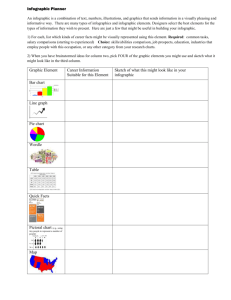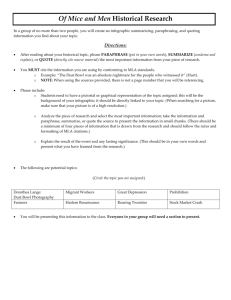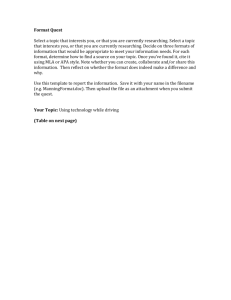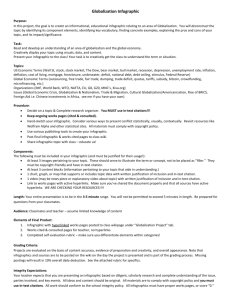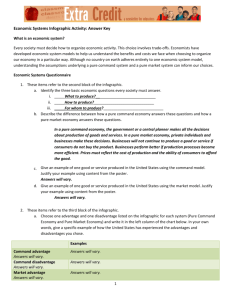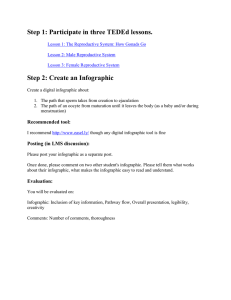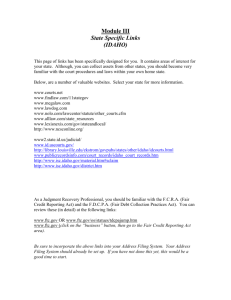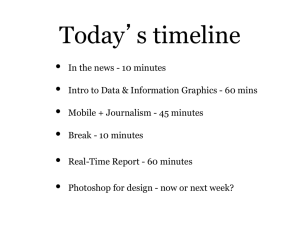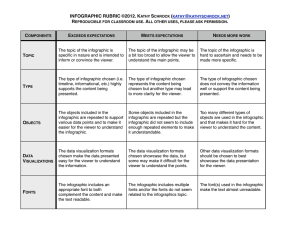Senior project paper overview
advertisement
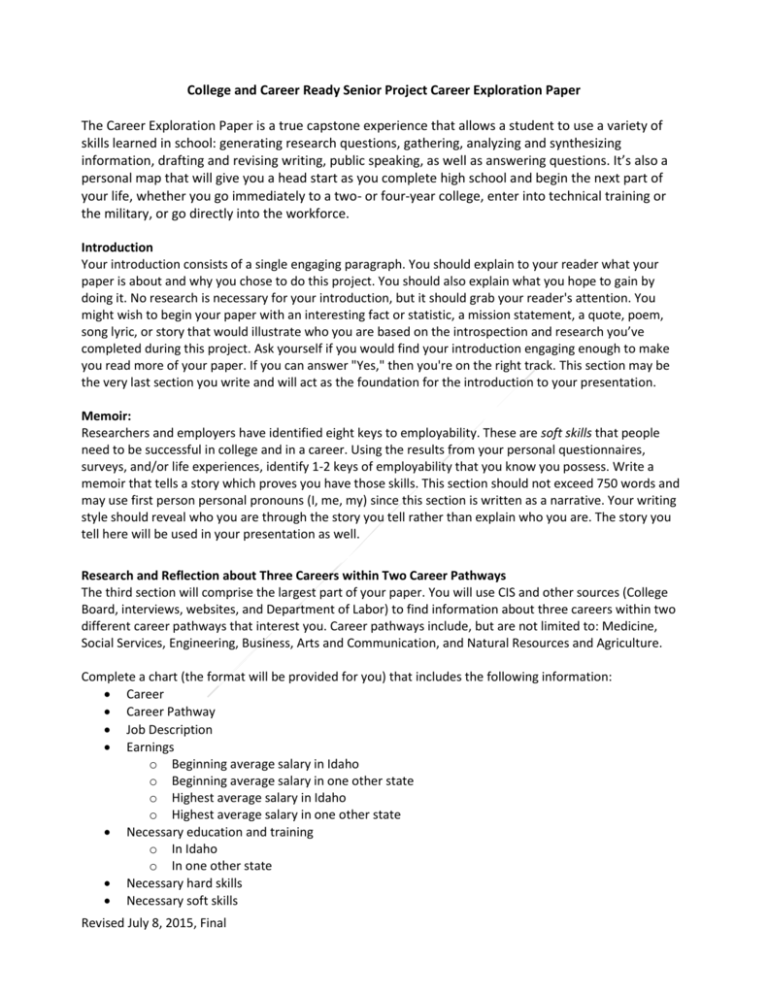
College and Career Ready Senior Project Career Exploration Paper The Career Exploration Paper is a true capstone experience that allows a student to use a variety of skills learned in school: generating research questions, gathering, analyzing and synthesizing information, drafting and revising writing, public speaking, as well as answering questions. It’s also a personal map that will give you a head start as you complete high school and begin the next part of your life, whether you go immediately to a two- or four-year college, enter into technical training or the military, or go directly into the workforce. Introduction Your introduction consists of a single engaging paragraph. You should explain to your reader what your paper is about and why you chose to do this project. You should also explain what you hope to gain by doing it. No research is necessary for your introduction, but it should grab your reader's attention. You might wish to begin your paper with an interesting fact or statistic, a mission statement, a quote, poem, song lyric, or story that would illustrate who you are based on the introspection and research you’ve completed during this project. Ask yourself if you would find your introduction engaging enough to make you read more of your paper. If you can answer "Yes," then you're on the right track. This section may be the very last section you write and will act as the foundation for the introduction to your presentation. Memoir: Researchers and employers have identified eight keys to employability. These are soft skills that people need to be successful in college and in a career. Using the results from your personal questionnaires, surveys, and/or life experiences, identify 1-2 keys of employability that you know you possess. Write a memoir that tells a story which proves you have those skills. This section should not exceed 750 words and may use first person personal pronouns (I, me, my) since this section is written as a narrative. Your writing style should reveal who you are through the story you tell rather than explain who you are. The story you tell here will be used in your presentation as well. Research and Reflection about Three Careers within Two Career Pathways The third section will comprise the largest part of your paper. You will use CIS and other sources (College Board, interviews, websites, and Department of Labor) to find information about three careers within two different career pathways that interest you. Career pathways include, but are not limited to: Medicine, Social Services, Engineering, Business, Arts and Communication, and Natural Resources and Agriculture. Complete a chart (the format will be provided for you) that includes the following information: Career Career Pathway Job Description Earnings o Beginning average salary in Idaho o Beginning average salary in one other state o Highest average salary in Idaho o Highest average salary in one other state Necessary education and training o In Idaho o In one other state Necessary hard skills Necessary soft skills Revised July 8, 2015, Final Employment opportunities o Long-term trends in Idaho o Long-term trends in one other state Cost of living in Idaho Cost of living in one other state Consider the components from the chart for each career, and rank the top 5 components that are most important to you for each career. The data you collect for this section of the paper should be referenced in your presentation. Infographic Create an infographic comparing the top 5 components for 2 of your identified careers to your own set of hard and soft skills. Remember that an infographic provides layered information in an organized, visually appealing manner. (www.easel.ly is a recommended free resource to create infographics.) The infographic created for this section of the paper will be an important way for you to share information with your audience in your presentation. Analysis Write an analysis of the information in your infographic. Reflect upon the data about your career and the personal data you’ve gathered about yourself. Explain how your personal traits, soft skills and interests align with the necessary skills for the three career options you’ve researched. How does the information help refine your focus for a post-secondary plan? Based on this analysis, write an argument which identifies the one career out of the three you have researched that is best for you. Use specific evidence from your research, including academic strengths and weaknesses, to support your claim. This is an argument, so you must include a range of advantages (claims) and disadvantages (counterclaims) to support your choice. This analysis and argument will provide important information that you use to explain your infographic in the presentation. Career Plan Explain to the reader the steps you plan to take to get a job in your chosen field. If you need any special training, this is the place where you will discuss how you will get it. Report on how you will develop your soft skills and academic strengths. What strategies and resources will you use to address areas of weaknesses? If you go to on to post-secondary education, explain where and what you will study. Discuss any scholarships, grants, financial aid, or work study opportunities you have learned about in your research. Finally, how long will training for your chosen career take, how much will it cost, and how will you support yourself during your training? Be honest. This section, which should be between one half page to two pages long, is also a place you may use first person personal pronouns as you are discussing your plan, your training, and how you will specifically achieve your goals. This plan will provide the structure and information for this section of your presentation. Conclusion In this final section, remind the reader where you want to be in five years. What will you contribute to your profession? How will you use your career aspirations to make the world a better place? This section will be 1-3 paragraphs long, written in the first person. Remember that your conclusion will help provide the foundation for the conclusion to your presentation as well. Revised July 8, 2015, Final
